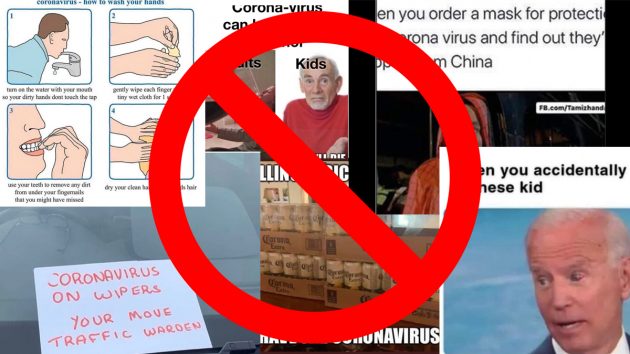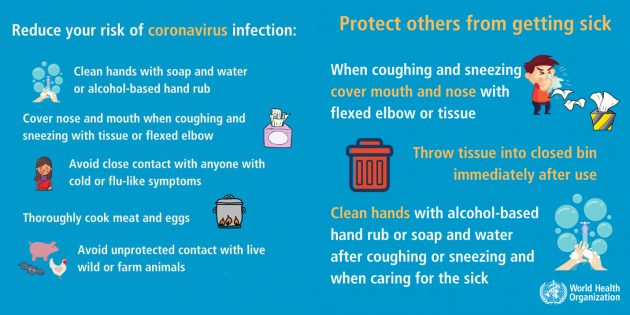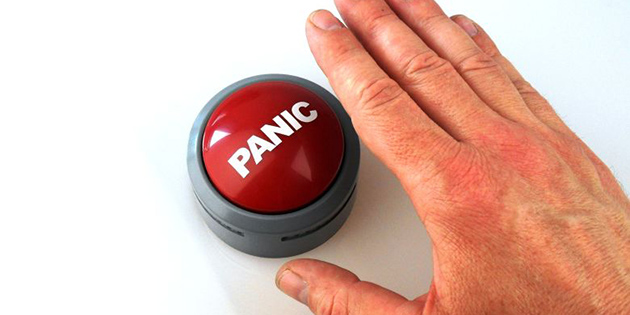The arrogance of the legacy media knows no bounds. Even as they irresponsibly whip up the flames of panic, they refuse to accept any culpability. Instead, they point the finger of blame at anyone, anywhere, but them. Donald Trump gets the blame, of course.
If that fails, then they just heap the blame falsely on their other favourite whipping-boy: internet culture.
Frequent updates and references to coronavirus on news sites as well as Twitter and Instagram can make the virus feel more threatening than it is[…]Even the proliferation of coronavirus memes and jokes can serve as another reminder of what feels like a lurking threat, said University of California, Riverside epidemiologist Brandon Brown.
There you go: you’re not even allowed to joke about coronavirus.

The internet tends to favor exaggerations or worst-case scenarios. Coronavirus jokes, intended to make light of the outbreak, often have a dark undertone. The bio for Instagram account @coronavirusplague, which exclusively shares memes about the virus, reads: “Just trying to make y’all laugh before we die.”
[…]The ability for anyone to share things on the internet has removed the gatekeepers who used to vet information before it was widely disseminated, allowing others without expertise to fill in those gaps with conspiracy theories or other false information, [University of Southern California medical education lecturer Sarah Mojarad] said.
I mean, it’s not as if the legacy media haven’t been flogging worst-case scenarios and exaggerations for all they’re worth. Despite their ridiculously egotistical self-image as “gatekeepers”, the so-called “curated media” (or so Obama stroked their egos) are a byword for “conspiracy theories and other false information”.
It’s also surely merely coincidental that internet culture, and new media especially, are threatening the legacy media’s self-appointed role as “gatekeepers of truth”. In the early 20th century, the print media whipped up fake stories like the “War of the Worlds” panic in order to try and discredit the then-new media, radio. Then it became TV’s turn. Now, the legacy media are trying to save their battered reputations by making the internet out to be dangerous and scary.
So, just what are these deadly, dangerous memes (memes!) driving young people to do?
Mckayla Fontanez, 20, of North Hollywood, purchased hand sanitizer and began wearing face masks in crowded places after she learned about coronavirus. On the L.A. subway she now pays attention to what she touches, such as the handrail on the escalator and the pole on the train car, she said[…]
Ellie Mitchell, 22, first learned about the new coronavirus after she saw it referenced in a meme. She quickly figured out that the flu is far more dangerous than the virus in the U.S., she said.
A pharmacy technician in San Francisco, Mitchell already washes her hands between interacting with almost every customer who come into the drug store where she works.
In the last couple of weeks, she started disinfecting her phone and wallet with rubbing alcohol when she got home from work. But it isn’t necessarily because of coronavirus, she said — the outbreak just got her thinking about how to prevent infections generally.
“These items are carriers of germs — I’d rather take two seconds to do that than be sick for two weeks,” she said.
The face mask sounds a little over the top, maybe, but the rest is all pretty sensible stuff. In fact, exactly what is recommended by the experts.

Stop trying to blame memes, legacy media: we all know who the panic merchants really are. Try looking in a mirror.
If you enjoyed this BFD article please consider sharing it with your friends.

